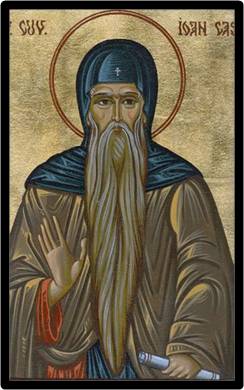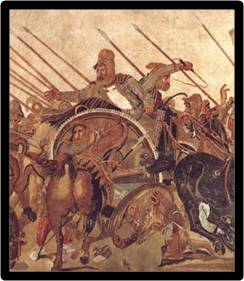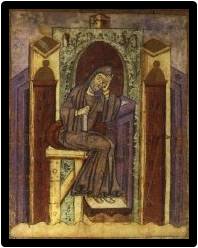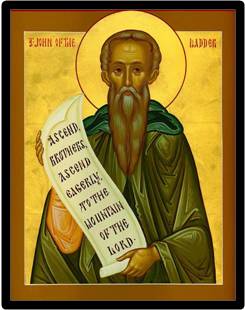MARCH 27 - ST. JOHN OF EGYPT

St. John of Egypt was born in Lycopolis, modern Assiut, Egypt, and became a hermit in his early twenties. He was a man who desired to be alone with God and became one of the most famous hermits of his time. John decided to leave the world for good and went into the desert to spend his life in prayer and sacrifice for God.
For ten years he was the disciple of an elderly, seasoned hermit. This holy man taught him how to be holy. St. John called him his “spiritual father.” After the older monk’s death, St. John spent four or five years in various monasteries because he wanted to know how monks pray and live.
Finally, John found a cave high in the rocks. The area was quiet and protected from the desert sun and winds. He divided the cave into three parts: a living room, a work room and a little chapel. He then walled himself up with a single window opening to preach to the people who came to see him and seek his advice about important matters. Even Emperor Theodosius I asked his advice twice.
People in the area brought him food and other necessities. When so many people came to visit him, some men became his disciples. They stayed in the area and built a hospice. They took care of the hospice so that more people could come to benefit from the wisdom of this hermit.
Such well-known saints as Augustine and Jerome wrote about the holiness of St. John. St. John was able to prophesy future events. He could look into the souls of those who came to him. He could read their thoughts. When he applied blessed oil on those who had a physical illness, they were often cured.
Even when John became famous, he remained humble and did not lead an easy life. He never ate before sunset. When he did eat, his food was dried fruit and vegetables. He never ate meat or cooked or warm food. St. John knew that his life of self-sacrifice would help him stay close to God. He died peacefully in 394 at the age of ninety.



